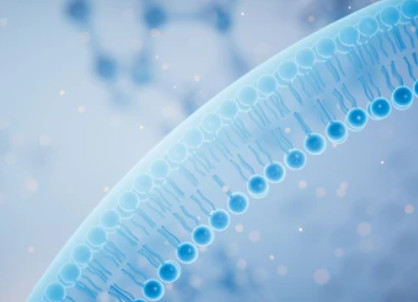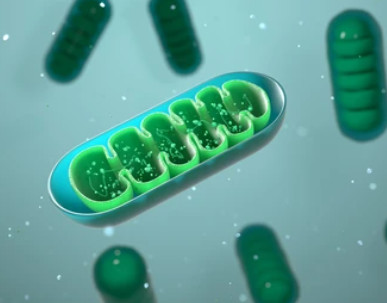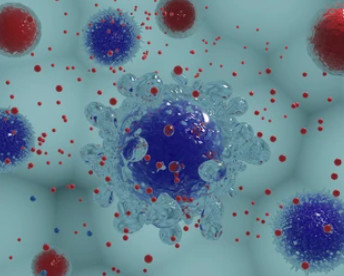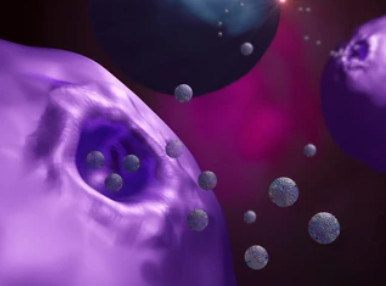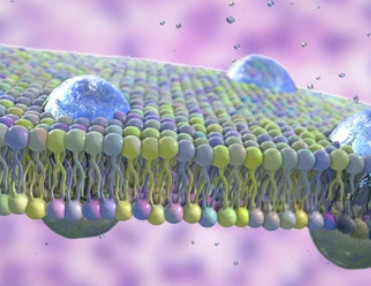Methods for Mitochondrial Isolation
Online InquiryMitochondria are dynamic bioenergetic organelles that play a crucial role in organisms. Any abnormalities in mitochondria can lead to a series of diseases. Current research has found a connection between mitochondrial dysfunction and various illnesses such as cancer and heart failure. With the continuous development of basic research, mitochondrial proteomics research is becoming increasingly popular. However, unlike studies related to genomics, the proteomics and metabolomics of mitochondria require the isolation of mitochondria before subsequent testing.
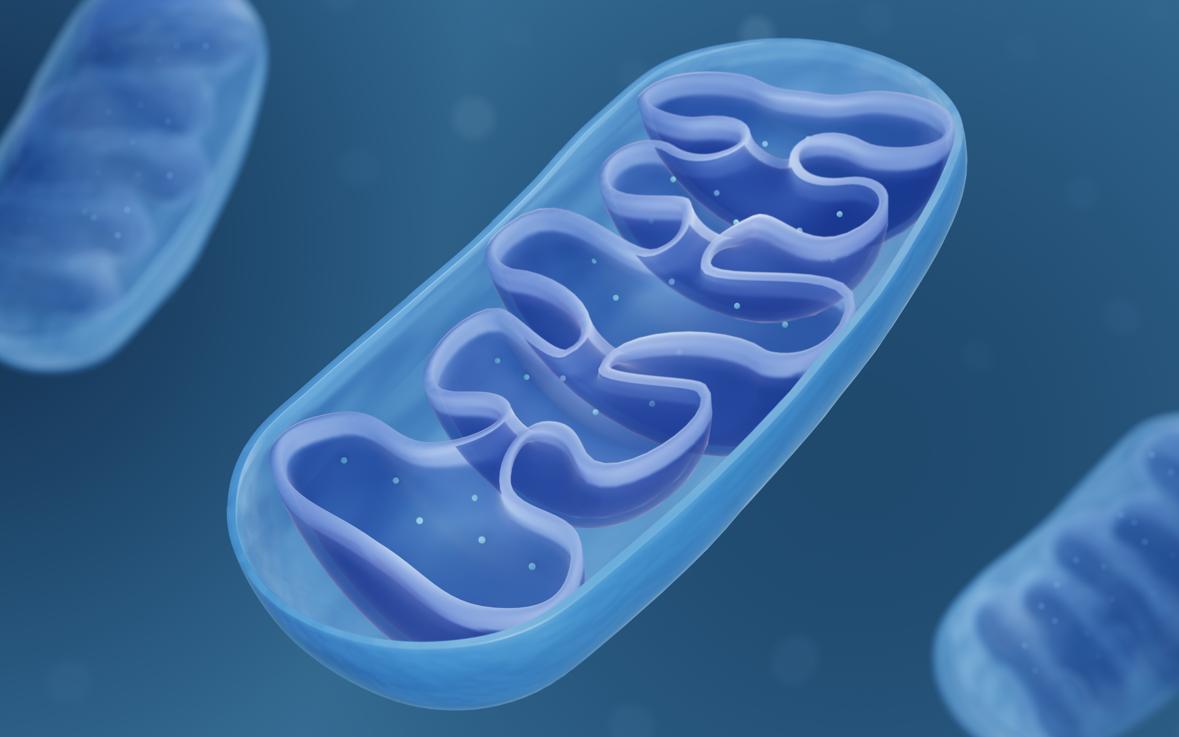
The traditional method for subcellular fractionation typically involves the preparation of a homogenate containing various organelles through mechanical homogenization. The purpose of this step is to break the cell membranes and release the organelles. Subsequently, organelle separation is performed, usually based on the differential sedimentation coefficients of different organelles, using methods such as differential centrifugation or density gradient centrifugation. Currently, there are also many commercial kits available for this purpose. Below, we introduce several mitochondrial isolation methods mentioned in the literature for learning purposes.
1. From: Purification and proteomic analysis of the mouse liver mitochondrial inner membrane. Methods Mol Biol. 2008;432:101-16.
The liver was incised, rinsed twice with pre-cooled MB buffer, and minced with a surgical blade. Subsequently, the minced liver was manually homogenized in 60 mL of MB buffer, using a glass homogenizer stored on ice. The resulting homogenate was centrifuged at 2000 g for 5 minutes at 4°C to remove cell nuclei and un-homogenized tissue. The supernatant obtained at 2000 g was further centrifuged twice at 11700 g for 10 minutes at 4°C to pellet the fraction enriched with mitochondria. Using a 10 mL pipette, the mitochondrial-enriched pellet was gently resuspended in 50 mL of pre-cooled MB buffer on ice, followed by purification of the mitochondria on a discontinuous Nycodenz gradient.
2. From: Calorie restriction and SIRT3 trigger global reprogramming of the mitochondrial protein acetylome. Mol Cell. 2013 Jan 10;49(1):186-99.
Mitochondria were isolated from mouse liver tissue homogenate through differential centrifugation. Protein extraction was achieved through ultrasonication, followed by quantification using the BCA analysis method. The proteins were reduced, alkylated, and digested with a combination of lysine endopeptidase and trypsin. The resulting peptides were labeled with TMT, mixed, and fractionated through strong cation exchange chromatography. Acetylated peptides were enriched using a pan-acetyl lysine antibody-Sepharose composite.
3. From: Landscape of submitochondrial protein distribution. Nat Commun. 2017 Aug 18;8(1):290.
Yeast cells were grown in YPG or basic medium until reaching an optical density (OD600) of 0.7–1.0 (for the preparation of highly purified mitochondria and outer membrane vesicles). Cells were harvested at OD600 of 0.7–1.5 and pelletized, then resuspended in a buffer containing 3 mg g−1 lytic enzyme-20T (1.2 M sorbitol, 20 mM potassium phosphate pH 7.4). After incubating at 24°C for 30 minutes, cells were homogenized with a glass homogenizer (20 strokes on ice) in homogenization buffer (0.6 M sorbitol, 10 mM Tris-HCl pH 7.4, 1 mM EDTA, 1 mM PMSF, 0.2% (w/v) fatty acid-free BSA). The homogenate was supplemented with 1x protease inhibitor mixture, and after centrifugation at 12,000×g for 15 minutes, the crude mitochondrial fraction was obtained from the pellet. Aliquots of the samples were stored in SEM buffer (250 mM sucrose, 1 mM EDTA, 10 mM MOPS-KOH pH 7.2) at −80°C. The mitochondrial fraction was loaded onto a three-step sucrose gradient (1.5 ml 60%, 4 ml 32%, 1.5 ml 23%, and 1.5 ml 15% sucrose in EM buffer: 1 mM EDTA, 10 mM MOPS-KOH pH 7.2) to obtain highly purified mitochondria. Samples were centrifuged at 134,000×g for 1 hour, and high-purity mitochondria were recovered from the 32-23% sucrose interface.
4. From: Mitochondrial metabolomic profiling for elucidating the alleviating potential of Polygonatum kingianum against high-fat diet-induced nonalcoholic fatty liver disease. World J Gastroenterol. 2019 Nov 21;25(43):6404-6415.
Rapidly place 0.1g of rat liver tissue into ice-cold isolation buffer (210 nmol/L mannitol, 70 nmol/L sucrose, 10 nmol/L Tris base, 1 nmol/L EDTA, and 0.5 nmol/L EGTA, pH 7.4) to remove blood. Cut the tissue into 1 mm3 pieces and homogenize using a Dounce glass homogenizer. After centrifugation at 1000g for 10 minutes, collect the supernatant, followed by centrifugation at 10000g for another 10 minutes. Resuspend the pellet in isolation buffer and centrifuge at 10000g for 10 minutes to separate mitochondria. Subsequently, resuspend the isolated mitochondria in 400 μL of acetonitrile. After vortex mixing and incubating at 4°C for 20 minutes, centrifuge the samples at 12000rpm for 15 minutes at 4°C. Dry the collected supernatant under nitrogen flow, then re-dissolve it in acetonitrile (100 μL) for mitochondrial metabolomics analysis.
5. Quantitative high-confidence human mitochondrial proteome and its dynamics in cellular context. Cell Metab. 2021 Dec 7;33(12):2464-2483.e18.
Harvest cells, wash with PBS, and collect by centrifugation at 800xg for 5 minutes. Resuspend the pellet in ice-cold SEM buffer (250 mM sucrose, 1 mM EDTA, 10 mM MOPS-KOH [pH 7.2]) at a ratio of 1 mL per 15 cm culture dish. This buffer contains 1 mM phenylmethylsulfonyl fluoride (PMSF; added only for spatial proteomics experiments; not used in routine proteomics to prevent enzyme inhibition during protein digestion for LC-MS analysis). Homogenize the cells on ice using a pre-cooled glass homogenizer and a polytetrafluoroethylene pestle. Centrifuge at 800 g for 5 minutes at 4°C to remove the supernatant containing organelles, with the pellet mainly consisting of cell debris. Resuspend the pellet in SEM (with/without PMSF) buffer and sonicate for 30 seconds; this fraction mainly contains the cell nucleus. Centrifuge the supernatant at 800 g for 5 minutes at 4°C to remove residual cell debris, then at 8000 g for 10 minutes at 4°C, with the resulting pellet representing the mitochondria. Resuspend the pellet in 100 mL SEM buffer per 15 cm culture dish (8 M urea/50 mM sodium phosphate [pH 8.0] in pSILAC experiments), considering it as a crude mitochondrial fraction. For higher purity mitochondria, perform sucrose density gradient centrifugation on crude mitochondria prepared from 12 mixed 15 cm culture dishes. Layer the crude mitochondria onto a sucrose density gradient composed of 60%, 32%, 23%, and 15% (w/v) sucrose in 10 mM MOPS/1 mM EDTA (pH 8.0). Centrifuge at 134,000 g for 1 hour at 4°C, recover the mitochondria at the interface between 60% and 32% sucrose, and dilute with 2 times the volume of SEM buffer. Finally, centrifuge at 8000 g for 10 minutes at 4°C, resuspend the mitochondrial-containing pellet in 200 mL SEM buffer, rapidly freeze in liquid nitrogen, and store at -80°C for later use.
6. Global mitochondrial protein import proteomics reveal distinct regulation by translation and translocation machinery. Mol Cell. 2022 Jan 20;82(2):435-446.e7.
Resuspend the cell pellet in pre-chilled MTE buffer containing 0.27M D-mannitol, 0.01M Tris base, 0.1mM EDTA, and one cocktail tablet of protease inhibitors (without EDTA, Roche). Process the cell suspension with a Sonics Vibra-Cell™ ultrasonic disruptor for 60 seconds to disrupt the cell membranes and shear genomic DNA. After ultrasonication, centrifuge at 1400g at 4°C for 10 minutes, and then at 15000g at 4°C for another 10 minutes to collect the supernatant containing mitochondria. Wash the obtained mitochondrial pellet once with MTE buffer and centrifuge at 15000g at 4°C for 5 minutes.
Related Services
* For Research Use Only. Not for use in diagnostic procedures.



